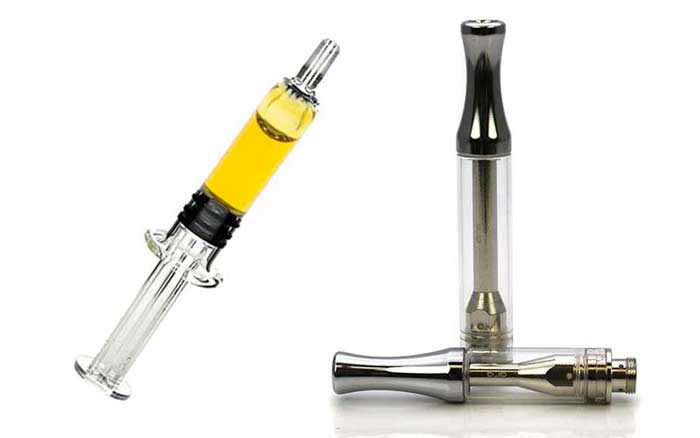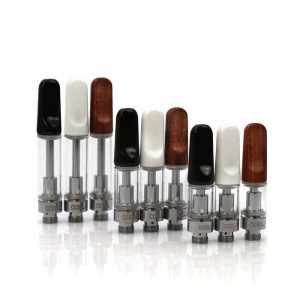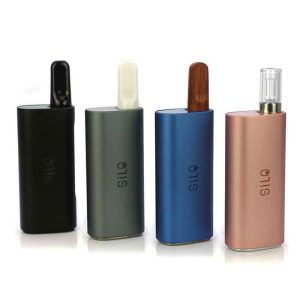Making Oil and Using Vape Cartridges
Making Oil and Using Vape Cartridges
By now you have probably had the opportunity to buy a prefilled cartridge with liquid oils in it. They will come in various sizes, tanks, and even full disposable pens now. Using a 510 thread allows you to not only vape discreetly, but also use your favorite e liquid/sub tank, all with the same battery/mod. Some batteries will even function as a battery bank, it’s obvious why there is so much emphasis on the prefilled cartridges these days.
Why isn’t everyone using the prefilled liquid oil cartridges now? Three reasons; cost, contents, and availability. The cost is simply very high for prefilled carts, while they can vary considerably in quality/quantity, in general the cost is not realistic to purchase regularly for daily smokers. The contents are always questionable, unless you get a lab test with every cart produced. We don’t like to name names, but hope you are aware that more than a few top companies producing prefilled carts have been busted for high pesticide levels. This is generally despite the fact that every publicly available lab test shows there are no pesticides, remember in CA currently the producer actually chooses what they test (yes that means a LARGE amount of products are never tested in CA, buyer beware)…
The only other main reason some aren’t using prefilled carts would be due to general lack of availability. The three reasons mentioned are why it can make sense to mix you own oil. This guide will go over what is necessary to get your own “formula” down.
The Formula
What is a formula? A formula is a process you have perfected through trial and error, we are going to start by going over what I call the “fundamentals of oil”:
Fundamental 1: Baseline
Fundamental 2: Mixing Ratio
Fundamental 3: Cartridge
Fundamental 4: Separation
I want to first mention that it’s important to be able to get a consistent supply of a specific concentrate. The reason is different concentrates can have very dissimilar results which brings me to my next point.
A baseline should be thought of as a starting point, it’s extremely important to have, and there is no “formula” without a baseline. If you don’t have one yet, don’t worry I will give you one. I will also mention the tanks I’ve used, leaving the one variable for you to be the concentrate. It should be easy to make a good solution using my baseline as a starting point.
Mixing Ratio
The mixing ratio is fundamental number two, and easily the most complicated as you will see. There are various mixers out there, but they are all going to have similar results when you go to a certain extreme. But first even before we go over the mixing ratio, we need to choose a tank. Liquid Oil is only as good as the tank it’s being vaped with, you will see why it’s important to understand what the tank is designed for. The top two 510 thread disposable tanks I personally recommend are currently the CCell TH models (TH205 and TH210), along with Transpring’s A3-C. To power these oil cartridges, buy the CCell Palm.
It doesn’t matter if you choose a different tank, but if you do my baseline may not be as much help. Back to the mixing ratio, the ideal mixing ratio is the viscosity (thickness) that the tank is designed for. Allow me to use personal experience to support my statement.
Cartridge
Through experimenting with various BHO mixes, I came up with a thicker one using a terpene based solution (Connoisseur Concentrates .3ml to 1 gram of budder). Even the Vape Society’s 510 disposable all ceramic tank was a bit harsh on this thick of a mix, however the same exact mix in the CCell TH205 worked very well, and was smooth while producing huge clouds. On the other hand, using Wax Liquidizer (2ml to 1 gram of budder) worked better in the Vape Society tank due to less burning (also why it seemed to have stronger flavor). The point of all this is to show you that different tanks, are good for different solutions. You want to choose a tank based on what it’s made for, you will not have good results trying to get a tank to do something it’s not designed for.
Finally, we can go over what happens when the mixing ratio goes to a certain extreme. To save you from reading more, I will share the baseline before the experiences that lead me to this. I currently mix 1 gram of CO2 shatter into .4ml of Connoisseur Concentrates terpene based mixing solution (either Tahoe OG or Skywalker OG flavors), which works great in both the CCell and Transpring tanks. I will now go over how I found .4ml to 1 gram of CO2 shatter to be the ideal mixing ratio.
As you read I first tried mixing budder BHO to .3ml, and to my surprise it needed less mixer than even the CO2 shatter. I started mixing only .2ml of Connoissuer Concentrates into 1 gram of CO2 shatter, but to my surprise it was less potent than the previous mix that was more diluted (with added .3ml). Wait a minute, there’s more oil in the .2ml mix though? Remember when I said the tank is only designed for a specific viscosity liquid? Well I even tried putting pure CO2 shatter in the CCell, it kind of worked, but like I said it’s not as potent and simply ends up wasting away on the sides of the glass. The same happened with even .2ml of terps mixed to 1 gram, I got about 10 puffs while on a trip before it stopped flowing (luckily I had two other with .4ml of terps mixed!!). This showed me the obvious disadvantages of using extremely thick liquids.
Eventually I got up to .4ml, and even tried going above that which is the other end of the extreme, too thin viscosity or too much terps/mixer. Note this is more specific to terp-based solutions such as Connoisseur Concentrates, the more mixer you use the worse it will generally taste. When I went above .4ml it did not taste as good, and was less smooth. At .4ml I have great results using the CCell and Transpring tanks, it also has given the most potent results yet.
Separation
With a good tank, and mixing ratio, you may be wondering what else there is to it. The final issue that is prevalent in the liquid oil business is separation. Separation generally occurs when one homogenizes oil with something like PG propylene glycol. Most PG based solutions also have PEG or polyethylene glycol, which can help but PG still separates fundamentally. I mixed Wax Liquidizer based solutions for hours on the double boiler to have it slowly separate by a week later. Separation is a big problem and will contribute to clogged coils, and bad performance overall. So how have I eliminated separation as an issue? Allow me to share some personal experience.
I had an issue also with Connoisseur Concentrates mixer separating at first, although it mixes better than Wax Liquidizer which I can’t recommend. The CC solution separated much faster though, and it did become problematic at first. I happened to forget I left my mixing vial on the volcano digital’s oven, then came back about 10 minutes later and noticed the solution turned from murky to very clear (from decarbing). I wasn’t happy since I knew it had to convert a lot of oil to CBN at that point (at 374F), but one thing I noticed was even after a week this solution didn’t separate even in the slightest. Well there you have it, add heat. It’s not that simple though, for Connoisseur Concentrates you don’t want to exceed 130-140 degrees Fahrenheit or you can burn the terpenes off. For other solutions I recommend you refer to the manufacturer, if you follow their instructions and still have separation, it’s likely not something you can prevent.
Conclusion
In summary, you need to first pick a tank that you will use. Once you know what it’s designed for, you can start trying to get the mixing ratio down to achieve an optimal viscosity. Use notes to document your baseline, and records the results you get from there. Continue to critique your initial baseline to find your ideal formula.
Always remember separation can occur for different reasons, which is why I recommend to refer to the manufacturer for help with this. In general though, decarbing is known to prevent separation, but at the cost of potentially burning off terpenes/flavor. The best practice is simply to use the least amount of heat possible to mix completely without separating, in practice however this is not so simple.









































Leave a Reply